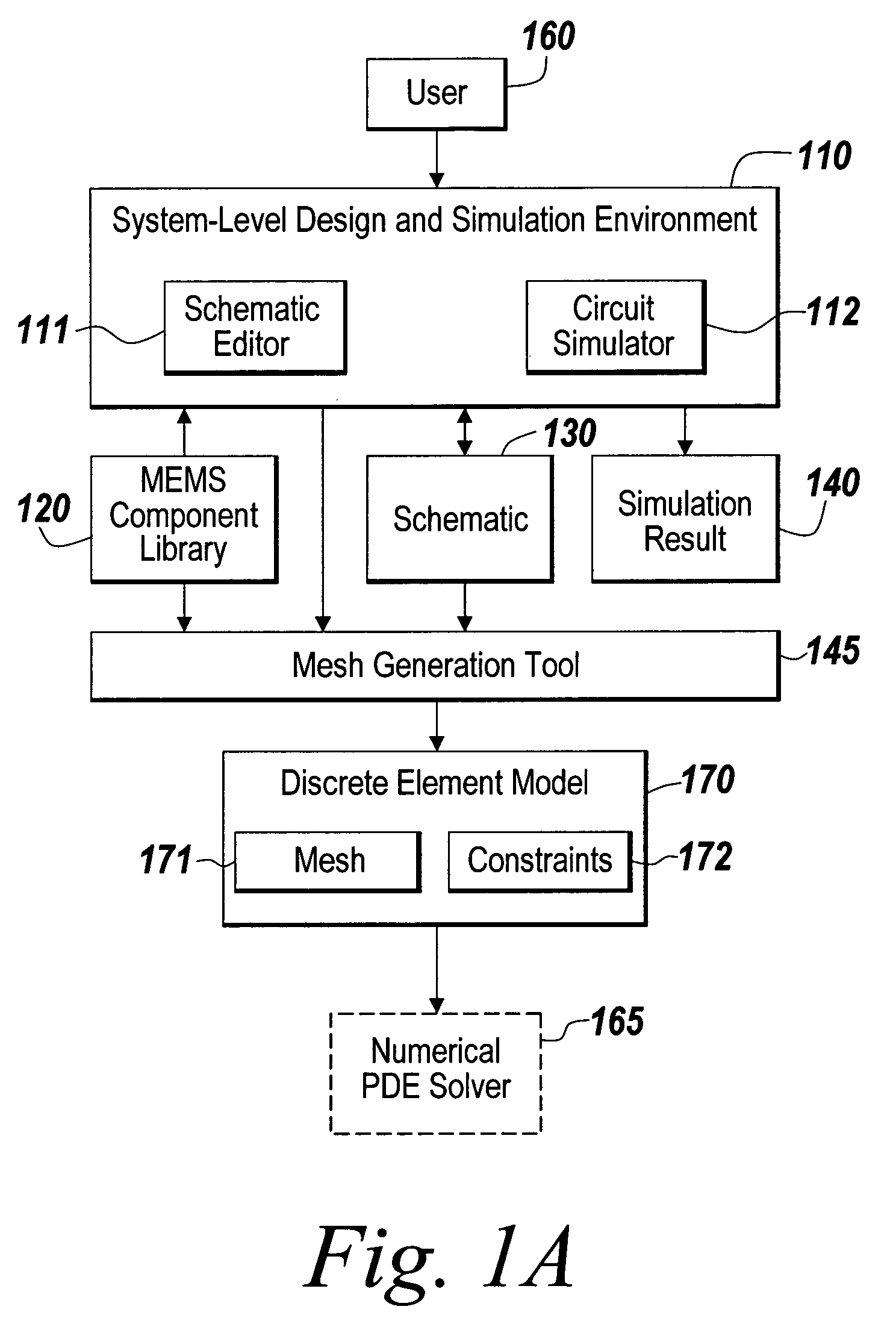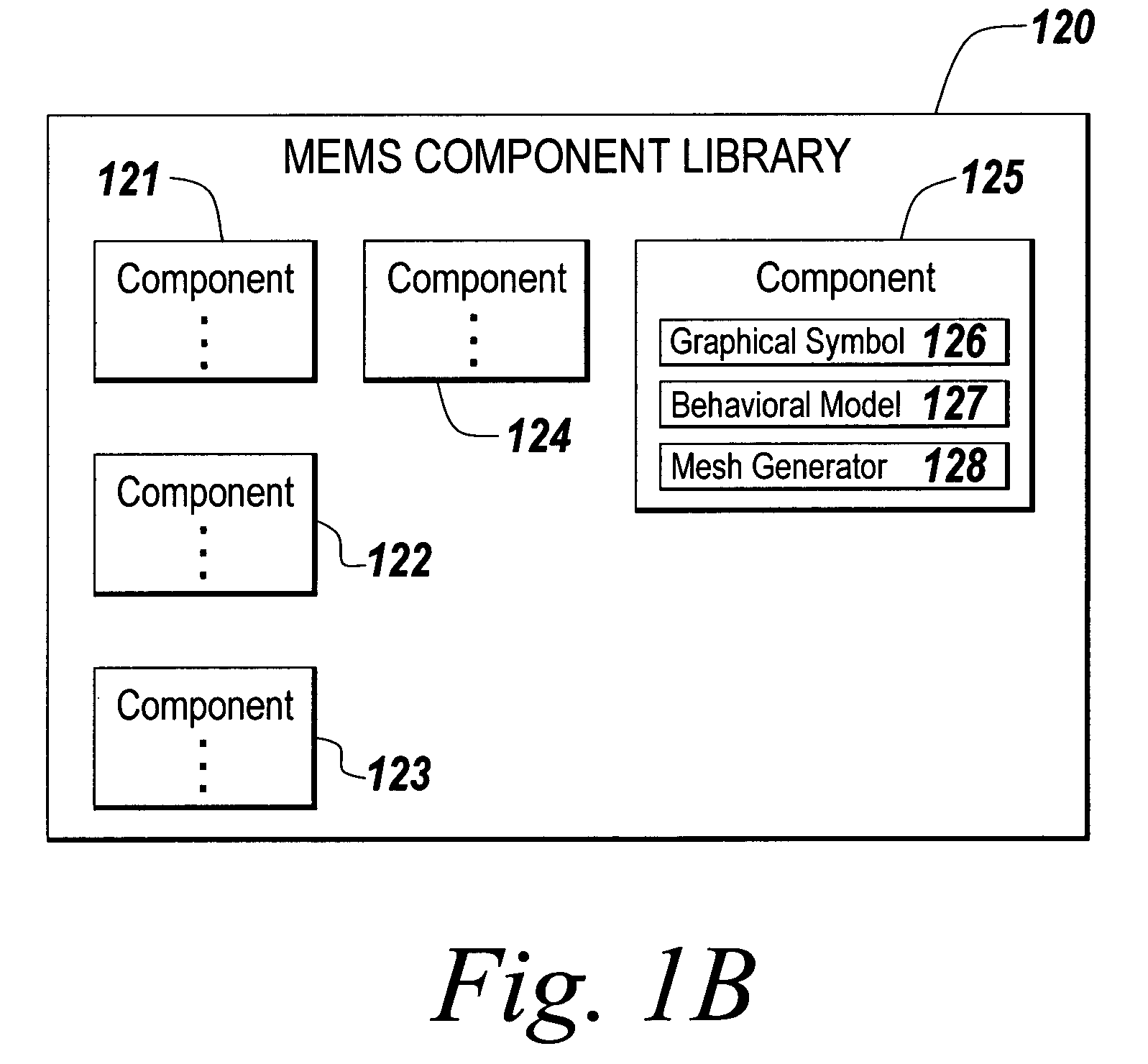System and method for automatic mesh generation from a system-level MEMS design
a system-level, automatic technology, applied in the direction of design optimisation/simulation, instruments, error detection/correction, etc., can solve the problems of large computational effort, large amount of memory and processing time, and high computational cost, so as to achieve rapid and efficient movement, improve the effect of automatic mesh generation and optimization, and avoid considerable unnecessary computation
- Summary
- Abstract
- Description
- Claims
- Application Information
AI Technical Summary
Benefits of technology
Problems solved by technology
Method used
Image
Examples
Embodiment Construction
[0021]The illustrative embodiment of the present invention enables a user to create a schematic design, such as a MEMS design, which includes multiple components. Each component is associated with a mesh generator. Each mesh generator is a set of computer instructions describing how to create a mesh for the associated component. A mesh generation tool is utilized to access the multiple mesh generators to create a mesh representing either a device, or a sub-assembly of a device that is being modeled. The mesh is used as input to a solver, such as a numerical PDE solver, in a simulation environment. The direct use of the schematic avoids the loss of data that would follow from generating the mesh from a 2D mask layout or 3D solid model derived from the schematic.
[0022]FIG. 1A depicts a block diagram of an environment suitable for practicing the illustrative embodiment of the present invention. A user 160 interfaces with a System-Level Design and Simulation Environment 110 that include...
PUM
 Login to View More
Login to View More Abstract
Description
Claims
Application Information
 Login to View More
Login to View More - R&D
- Intellectual Property
- Life Sciences
- Materials
- Tech Scout
- Unparalleled Data Quality
- Higher Quality Content
- 60% Fewer Hallucinations
Browse by: Latest US Patents, China's latest patents, Technical Efficacy Thesaurus, Application Domain, Technology Topic, Popular Technical Reports.
© 2025 PatSnap. All rights reserved.Legal|Privacy policy|Modern Slavery Act Transparency Statement|Sitemap|About US| Contact US: help@patsnap.com



